
Pablo Picasso was a recognized genius of 20th-century art
Pablo Picasso (born October 25, 1881 - died April 8, 1973) was a French artist of Spanish origin in the 20th century, the founder of Cubism, and the most expensive painter in the world. He was widely known as a sculptor, printmaker, designer, ceramicist, and theater decorator. Pablo Picasso lived an extraordinary and very long life, leaving behind more than 20,000 artistic works to his descendants. His paintings, which are highly sought after at auctions, hold special value.
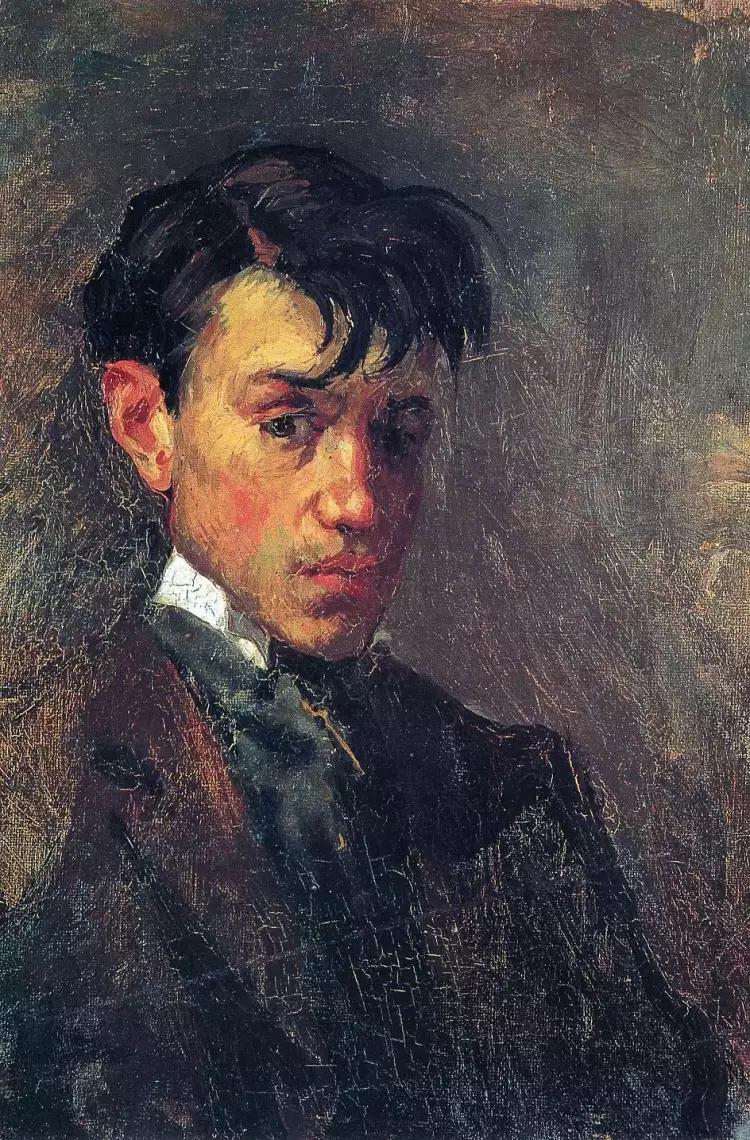 Pablo Picasso. Self-portrait, 1896
Pablo Picasso. Self-portrait, 1896
Pablo Picasso made a significant contribution to the world of visual arts, constantly experimenting with different styles and genres. According to many art enthusiasts, Picasso is considered the greatest artist of the past century on our planet.
Creativity and Biography of Pablo Picasso
Pablo Picasso was born on October 25, 1881, in Malaga, in the south of Spain, to a family of art teachers. When he was 8 years old, his father obtained a position in another region of the country - Galicia, and the whole family moved to La Coruña, and in 1895 - to Barcelona.
From a young age, Pablo developed a passion for drawing, and at the age of 8, he created a painting called "Picador," which he cherished and always kept with him throughout his life. Picasso received his initial art education at the La Coruña School of Arts, and at the age of 14, he was accepted into La Llotja, a prestigious humanities educational institution in Barcelona.
At the age of 16, Pablo continued his studies at the main center for artist training in Spain, the Royal Academy of Fine Arts. The teenager was not particularly interested in the dull classes, but he eagerly studied the magnificent collection of masterpieces at the Prado Museum.
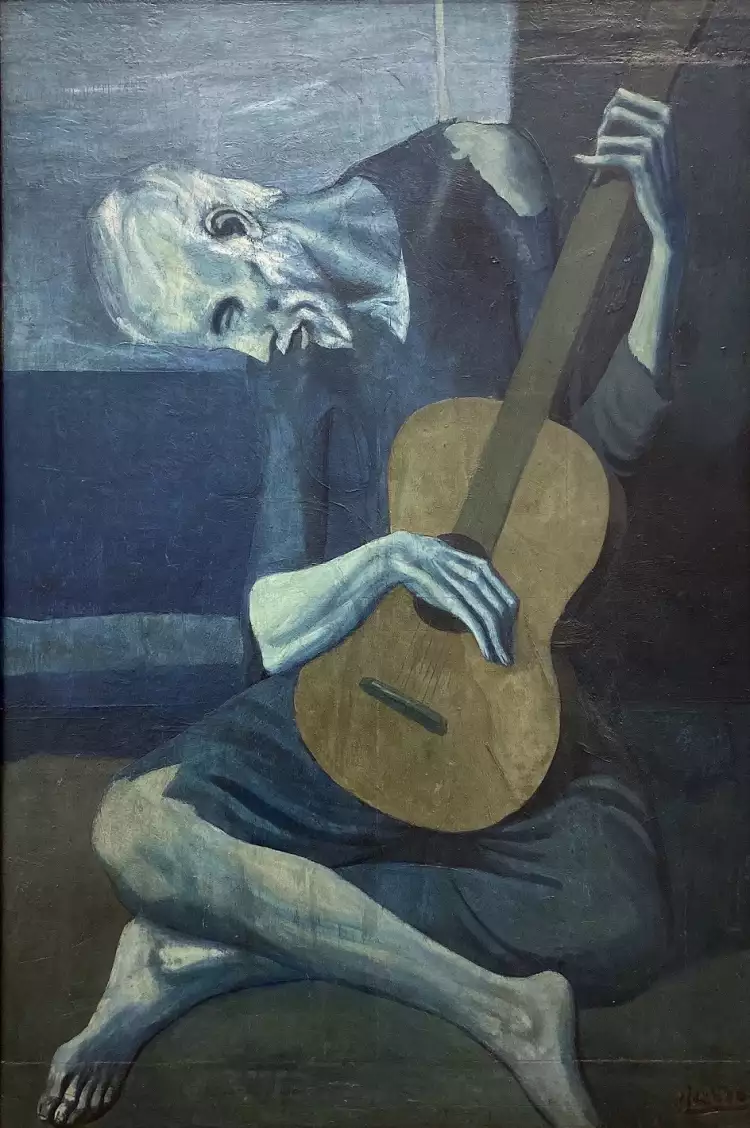 Pablo Picasso. The Old Guitarist, 1903
Pablo Picasso. The Old Guitarist, 1903
In 1898, the young Pablo returned to the capital of Catalonia and became a member of the art community Els Quatre Gats. Two years later, his first solo exhibition was held at a café of the same name.
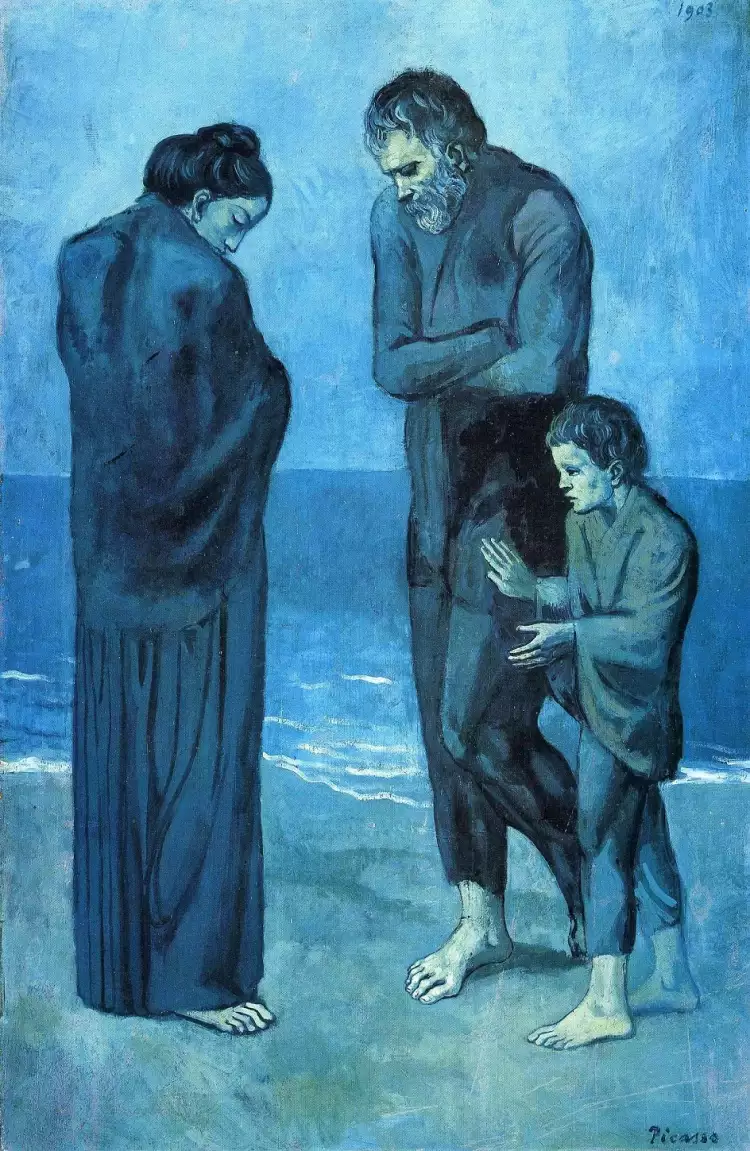 Pablo Picasso. The tragedy, 1903
Pablo Picasso. The tragedy, 1903
The year 1900 marked a turning point in the artist's biography. Picasso visited Paris for the first time for the World Exhibition, where he was greatly impressed by the works of the Impressionists. Under their influence, the artist's first professional period of work, known as the "Blue Period," emerged. The paintings from this period are filled with sadness and melancholy, with the artist primarily depicting beggars, vagabonds, and destitute individuals.
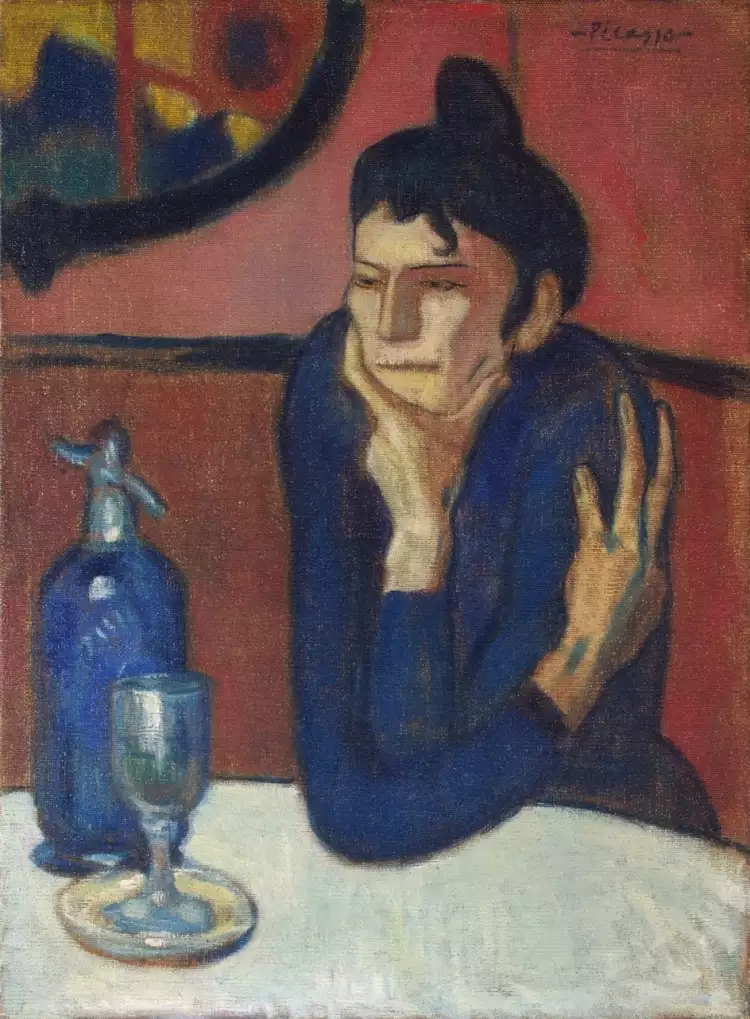 Pablo Picasso. Absinthe Drinker, 1901
Pablo Picasso. Absinthe Drinker, 1901
The famous painting "Girl with a Ball" marked the transition to the next creative phase, known as the "Rose Period." Not only did the color palette of the young painter's works change, but also the style of representation. They began to exude life-affirming notes, although Picasso himself struggled financially during this time.
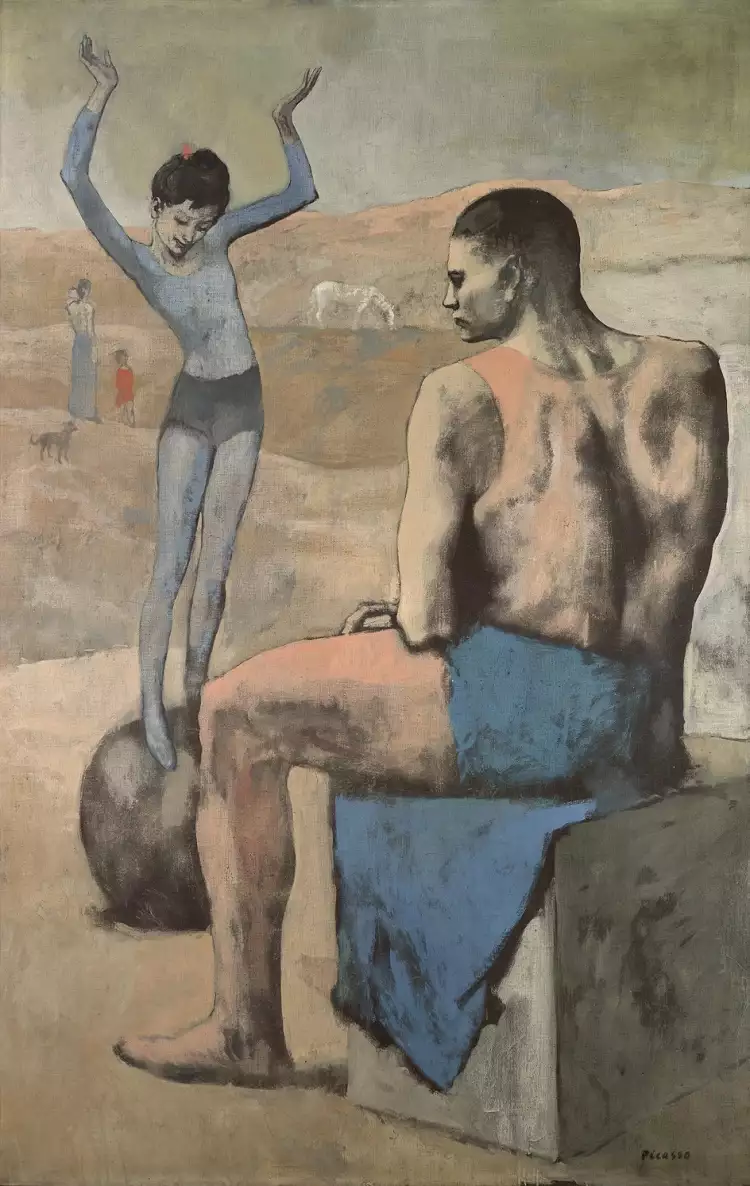 Pablo Picasso. Girl on a Ball, 1905
Pablo Picasso. Girl on a Ball, 1905
In 1907, Picasso became interested in African culture and created his most expensive painting, "The Brothel of Avignon." The painter moved away from attempting to depict recognizable human figures and started painting abstract personalities. Picasso's new artistic ideas were not well-received even by his closest friends, but the genius himself was indifferent to it.
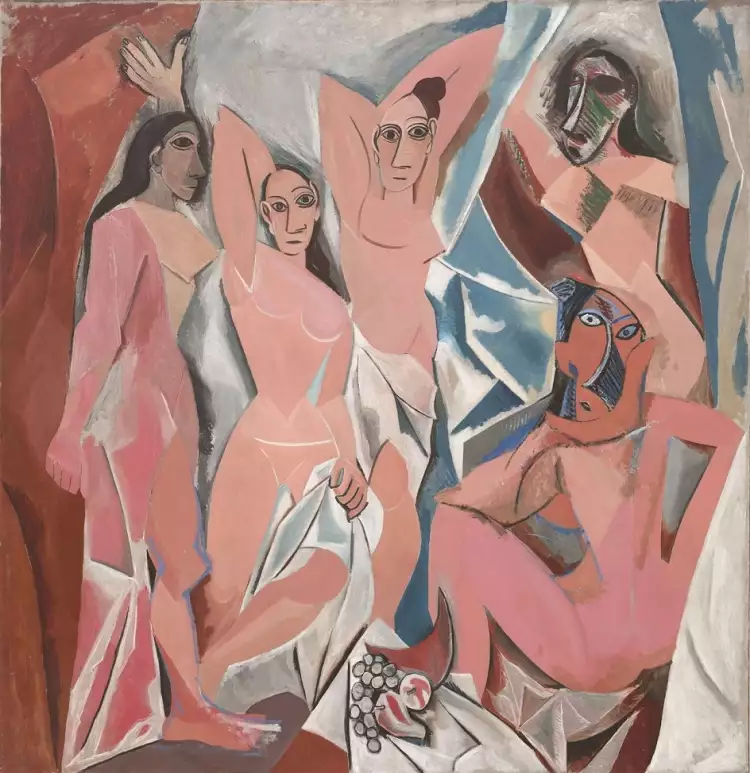 Pablo Picasso. The Brothel of Avignon, 1907
Pablo Picasso. The Brothel of Avignon, 1907
The year 1909 marked the birth of a new style, Cubism, in the history of world visual arts and in Picasso's life. This revolutionary movement ruthlessly rejected the naturalistic traditions in painting and faced a wave of criticism. However, the artist's works began to sell well, marking the end of the poverty era in his life.
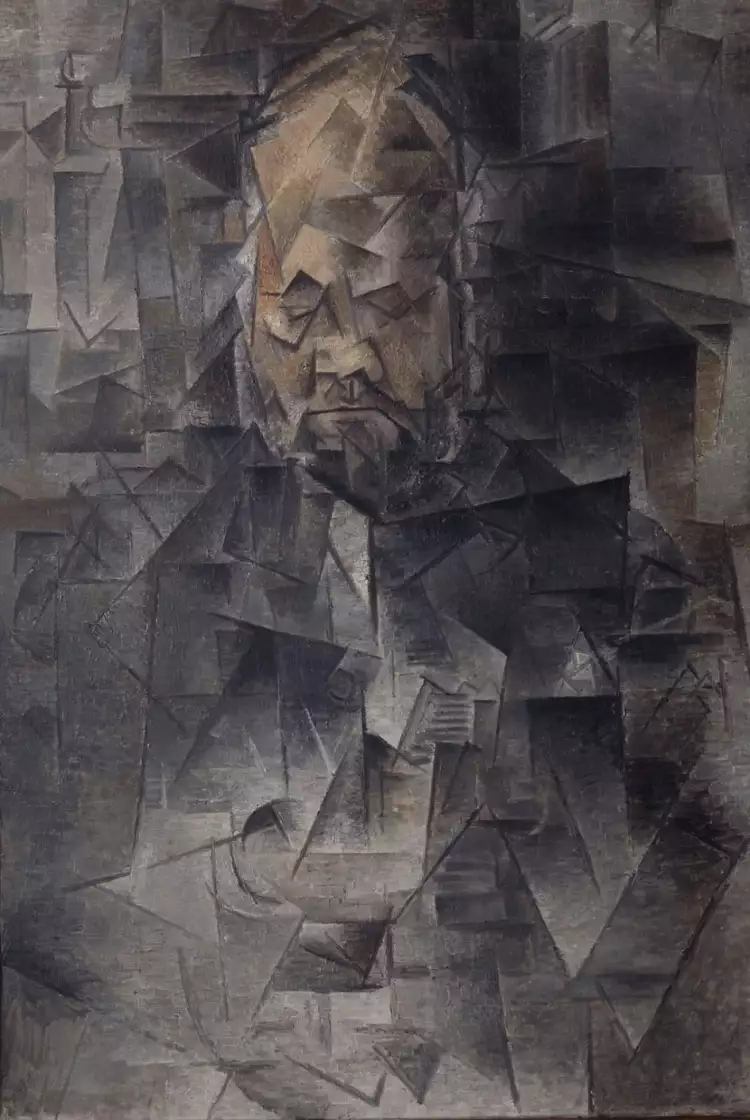 Pablo Picasso. Portrait of Ambroise Vollard, 1910
Pablo Picasso. Portrait of Ambroise Vollard, 1910
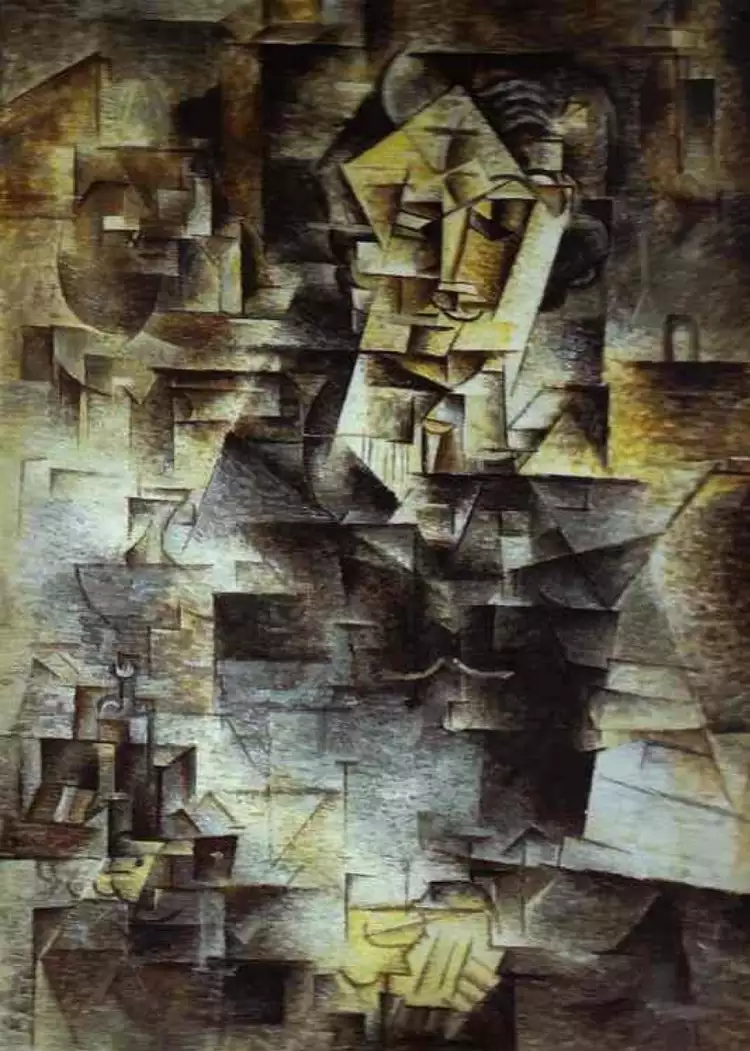 Pablo Picasso. Portrait of Daniel-Henry Kahnweiler, 1910
Pablo Picasso. Portrait of Daniel-Henry Kahnweiler, 1910
In 1917, Picasso received a commission to create sets and costumes for Diaghilev's ballet, and over the next 8 years, he received several similar offers.
From Cubism, Picasso transitioned to Neoclassicism. Recognizable faces and real forms reappeared in the artist's paintings.
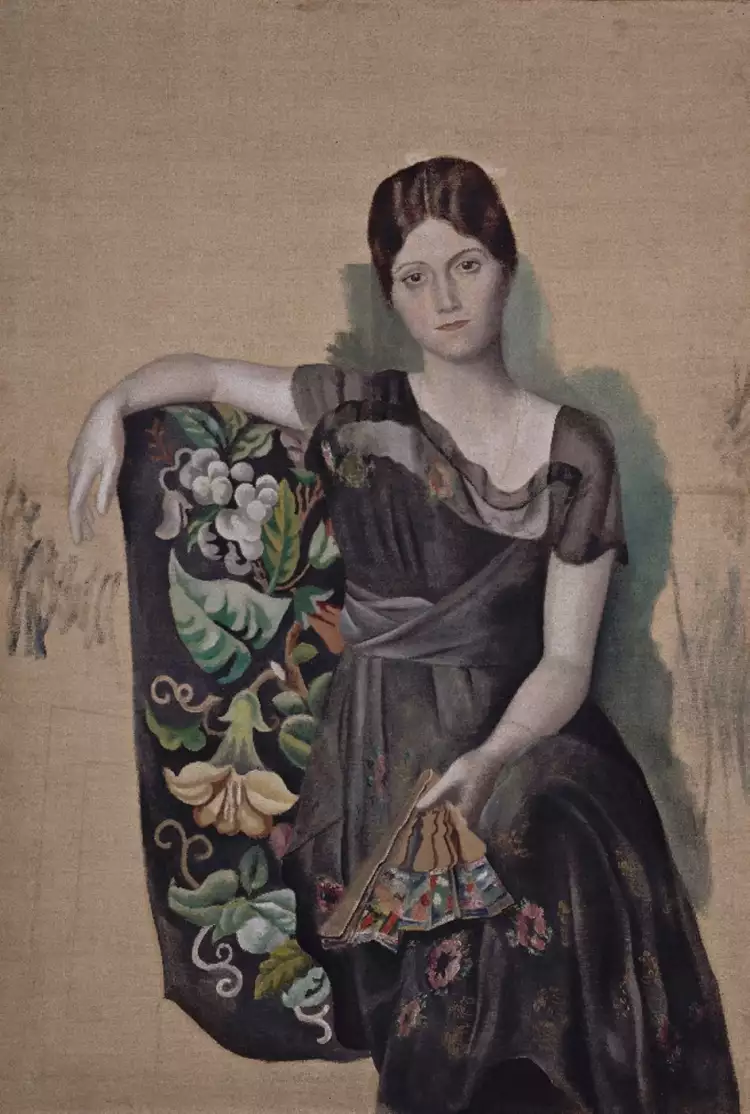 Pablo Picasso. Olga in an Armchair, 1917
Pablo Picasso. Olga in an Armchair, 1917
In 1925, a new creative period began in Pablo's life - an interest in Surrealism. In this style, he created sculptural and painterly works, embodying strong erotic images of monsters from the world of dreams and the subconscious.
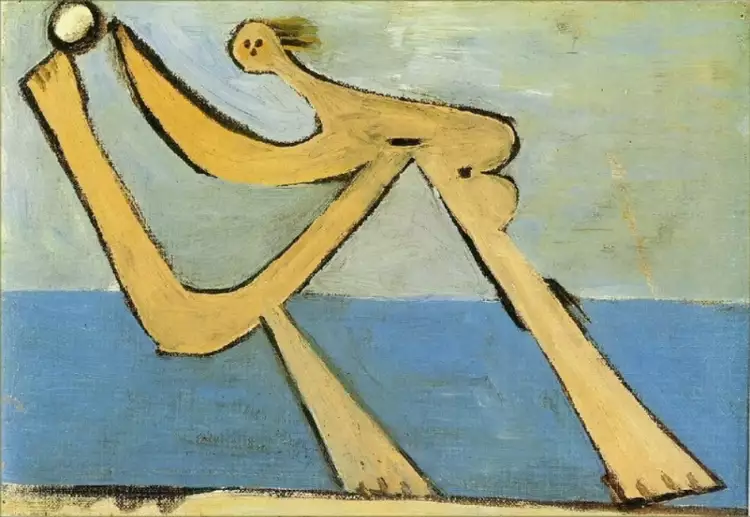 Pablo Picasso. The bathers 4, 1928
Pablo Picasso. The bathers 4, 1928
In 1937, tragic events unfolded in Spain as the country was engulfed in a civil war. Three years later, German troops occupied France. The painter Pablo Picasso vehemently protested against the senseless bloodshed. This protest was reflected in his works, imbued with a spirit of pacifism.
The post-war period of Picasso's career was the brightest in his life. The artist found domestic happiness, moved with his new wife from Paris to the south of France, and enjoyed simple joys of life. He became passionate about lithography and decorative arts.
In his final years, Picasso's health deteriorated steadily, while his fame continued to grow. Despite facing significant problems with his vision and hearing, the artist continued to work, often creating portraits of women.
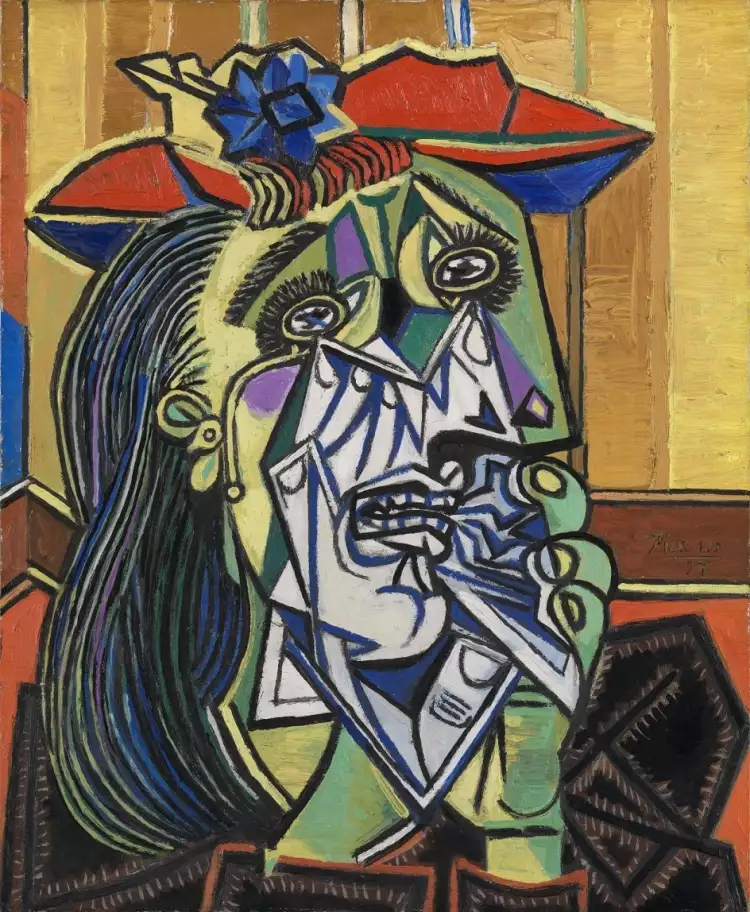 Pablo Picasso. Weeping woman, 1937
Pablo Picasso. Weeping woman, 1937
Pablo Picasso passed away on April 8, 1973. He left this world at the age of 91 in his country estate. The remarkable genius achieved worldwide recognition and became a multimillionaire. The first museum dedicated to his name was established in Barcelona, Spain, during his lifetime. Interest in the works of this brilliant painter persists to this day.
The Most Famous Paintings by Pablo Picasso
Art enthusiasts from all over the world are familiar with many of Pablo Picasso's paintings. Among the tens of thousands of works by the master, it is very difficult to pinpoint the most recognizable ones, but we will attempt to do so:
- "The Absinthe Drinker" (1901) - a vibrant painting depicting loneliness and spiritual emptiness. The artist painted it on the reverse side of the canvas because he was in extreme need at that time.
- "Girl with a Ball" (1905) - the most famous masterpiece by the artist, featured in the collections of Russian museums. It marked the beginning of the transition to the "Rose Period" of Picasso's work.
- "The Brothel of Avignon" (1907) - the most scandalous painting by the master, which shocked the public and infuriated Henri Matisse. Picasso worked on this canvas for over a year, which had never happened before.
- "Portrait of Daniel-Henry Kahnweiler" (1910) - a mysterious artwork in the form of a clever puzzle. A vivid example of the artist's fascination with Cubism.
- "Bathers 4" (1928) - an example of the author's unique perspective on the beauty of the female body during his Surrealist period.
- "Guernica" (1937) - a condemnatory verdict from Picasso against German fascism and the regime of dictator Franco. It became a symbol of the horrific tragedy suffered by the Spanish people.
- "Pigeon Picasso" (1949) - the emblem of the World Congress of Supporters of Peace. A recognizable anti-war symbol found in all corners of the Earth.
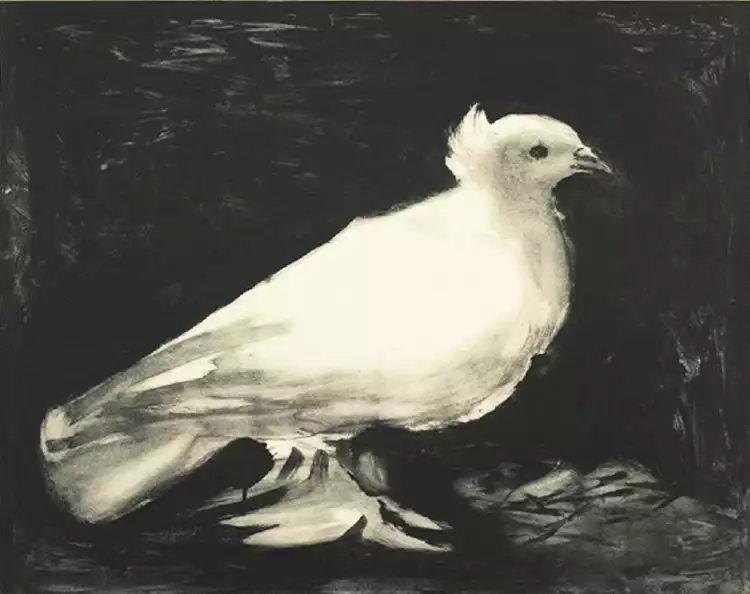 Pablo Picasso. Pigeon Picasso, 1949
Pablo Picasso. Pigeon Picasso, 1949
Picasso's work has had a profound influence on 20th-century visual arts. The great master is loved and respected worldwide, and people are willing to pay enormous sums for his artworks.
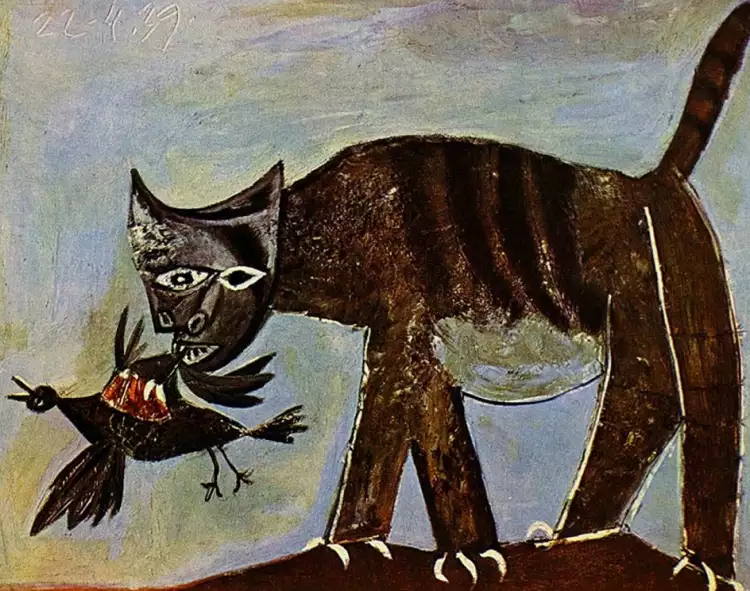 Pablo Picasso. A cat grabbing a bird, 1939
Pablo Picasso. A cat grabbing a bird, 1939
The website Very Important Lot offers art enthusiasts a convenient opportunity to participate in art auctions and acquire antique masterpieces. Here, you can also directly purchase paintings from contemporary artists.
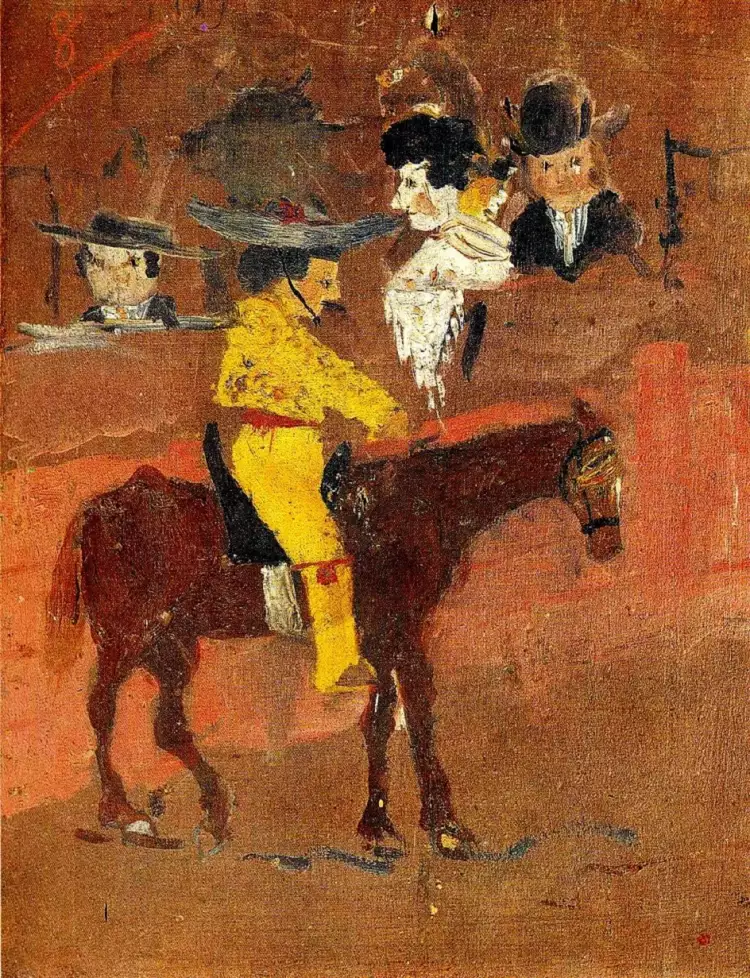
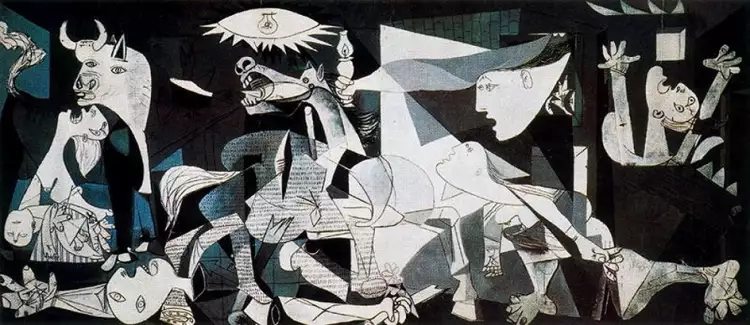
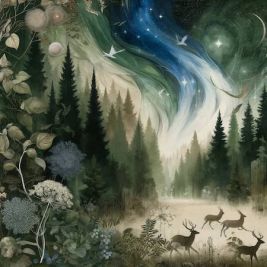 The Return of Nature: Embracing Nature Renewal Art in 2024
The Return of Nature: Embracing Nature Renewal Art in 2024 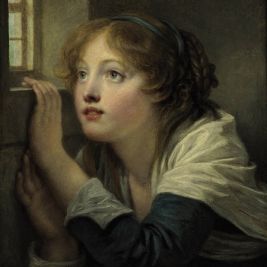 Sentimentalism in Painting: Heartfelt Emotions and Sensitive Subjects
Sentimentalism in Painting: Heartfelt Emotions and Sensitive Subjects  100th Auction at HERMANN HISTORICA from 7 to 16 May 2024
100th Auction at HERMANN HISTORICA from 7 to 16 May 2024 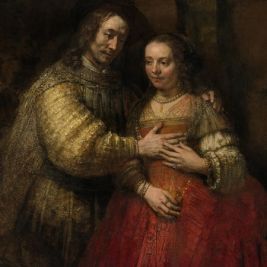 The painting "The Jewish Bride" by Rembrandt is one of the master's last works
The painting "The Jewish Bride" by Rembrandt is one of the master's last works 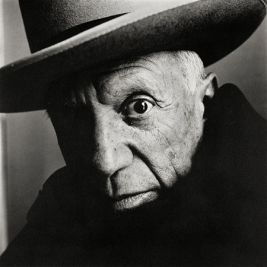 The top 10 most famous photographers in the world - the best photo artists of all time
The top 10 most famous photographers in the world - the best photo artists of all time  The Rise of Generative Art: Bridging Technology and Creativity
The Rise of Generative Art: Bridging Technology and Creativity  Phaleristics is a young scientific discipline about antique awards
Phaleristics is a young scientific discipline about antique awards 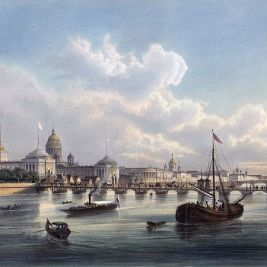 Lithography is a type of graphics and a masterpiece of art
Lithography is a type of graphics and a masterpiece of art 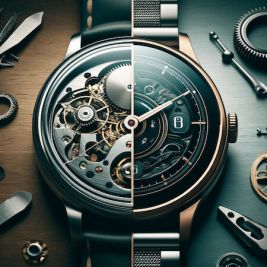 Navigating the Currents: The Tension Between Vintage and Modern Watches
Navigating the Currents: The Tension Between Vintage and Modern Watches 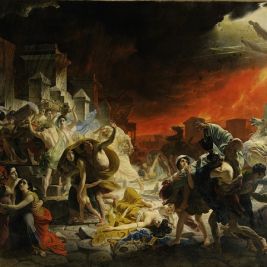 Historical Genre in Artists' Paintings
Historical Genre in Artists' Paintings